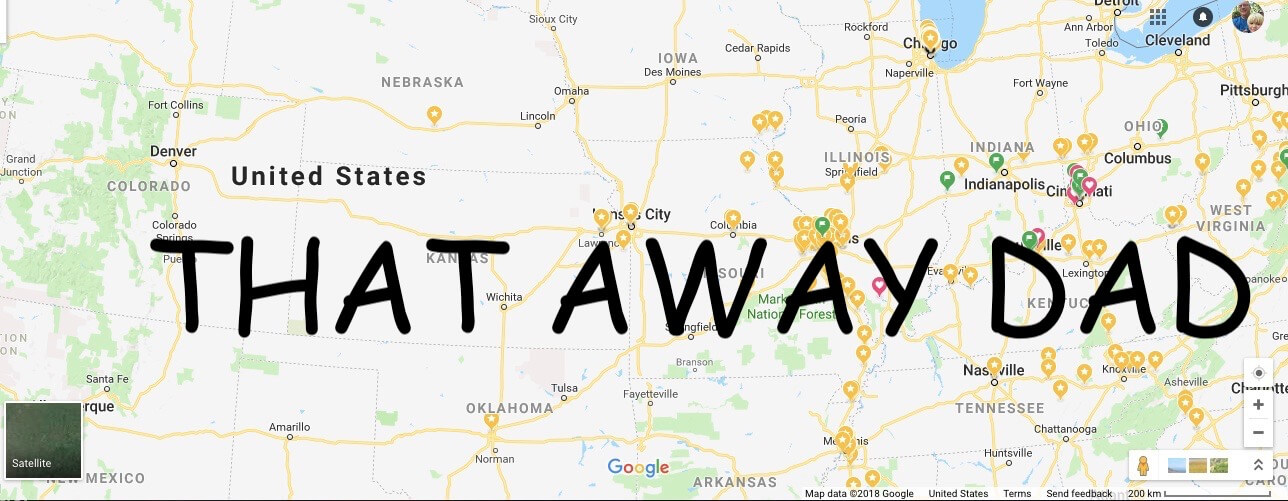Near Kansas City, Missouri, Fort Osage was constructed in the early 1800s under the direction of explorer General William Clark to protect U.S. pioneers.
Established in 1808 as a military outpost in the newly acquired Louisiana Territory.
The fort’s purpose was to provide a military presence in the territory in order to assure Spain, France, and Great Britain that the United States meant to protect its territory by military strength.
Also to establish healthy relations with the Native American population in the territory.

OUR TIME HERE
From the Parking Lot
We walked to the left of the parking lot heading to the Education/Visitor’s Center.

Along this walk are signs about the history of the fort.

You can also take in a commanding view of the Missouri River, which explains the location of the fort.

Entering the Visitor’s Center
Near the front is a 3-pounder Light Infantry Gun used during the 1800s.

We were close to Veteran’s Day, so veterans displayed military gear from past wars. They also talked about what infantry would have on them.
Next we went to the visitor information desk and paid our admission for the fort located further to the west on a short path from the center.
On the entrance level, there are also restrooms and a museum store. Most of the museum displays are below which we did next.
Museum Below
You can either take the elevator or the stairs down to the lower level.

Near the stairs is a dugout canoe built by Native Americans. It is original and mostly intact.

A nearby display talks about the soil types along the Missouri River, one of the natural environment displays.

Then you can walk through a cut-out of an Osage Nation wigwam.

Next was a display on explorers Lewis and Clark. A quote by Clark about the fort is below.

Then a display about the Factory. This was the main house of the fort which was a center of trade for the area. Remnants of this building are where the rebuilt Factory is located.

You can see what the soldiers who were garrisoned wore at this time.
These are a few of the displays in the museum. Next, we headed to the fort.


Exploring the Fort
Near the entrance of the fort is a high blockhouse, among many in the fort, used to provide protection.

We went into one of the rooms where you could see that the infantry were in close quarters.

Then we went to where they did woodworking.

Next, we came to a blacksmith’s shop where metal was forged for tools.

Then we came to another blockhouse. Reenactors were cleaning cannons.
A reenactor said that the cannon could shoot to the distance of the railroad bridge.


Next, we came to the officer’s chambers. You can see a table they would have eaten at and they of course had nicer accommodations.

The last place we went into was the Factory. A map was on display of other forts in the region at the time.
Then along the wall, you can see cups, bags, sheets, and small barrels, items used for trade at the time.

We saw animal skins, such as deer and beaver. They had a bearskin with its mouth open, my son Andrew liked that one. Also, in this building is a large kitchen.

The basement area led to a closed powder magazine used to store gunpowder.

The trail at the fort ends at one last blockhouse where we turned around and headed back.

Final Thoughts
The fort had reenactors which helped us in learning more about the people who lived here.

We were lucky to have been on a weekend near Veteran’s Day to see more displays. If you want to see a rebuilt fort near Kansas City, then this is a worthy stop.

DETAILS
Drive from St. Louis: Take Interstate 70 to Exit 37 and go north on Missouri Highway 131 then make a left onto U.S. Highway 24. Next make a right onto Buckner-Tarsney Road and a short left onto Chicago Avenue in Sibley, Mo. Then a right onto Santa Fe Street and then a right onto Fourth Street which will lead to the fort.
Drive from Kansas City: Take Interstate 70 to Exit 17 and go north on Little Blue Parkway then make a right onto Missouri Highway 76 and then a left onto Missouri Highway 7. Next, make a right onto U.S. Highway 24 and then a left onto Buckner-Tarsney Road. Then a short left onto Chicago Avenue in Sibley, Mo. Then a right onto Santa Fe Street and then a right onto Fourth Street which will lead to the fort.
Hours: 9 a.m. – 4:30 p.m.
Admission: $8, Adults; $4, Seniors (62 and Older); $4, Youth (5-13); Under 5 Is Free
Address: 105 Osage Street, Sibley, Mo., 64088
MORE MIDWEST HISTORICAL SITES

Jefferson Barracks Park: Dennis Schick Trail
Dennis Schick Trail includes historic sites and war machinery such as a World War II Sherman Tank in Jefferson Barracks Park in St. Louis County.

Ulysses S. Grant National Historic Site: Whitehaven Tour
See a Civil War general and president’s estate at the Ulysses S. Grant National Historic Site across the road from the Grant’s Farm entrance.

Touring Topeka and the Brown V. Board of Education Site
In Topeka, Kans., you can learn the history of segregated schools firsthand, a zoo with a tropical rain forest, and tour the state capitol.

Branson Bound: Wilson’s Creek National Battlefield
A national Civil War battlefield, a frog-shaped rock, and a devil’s elbow are some of what can be seen on the way from St. Louis to Branson!


